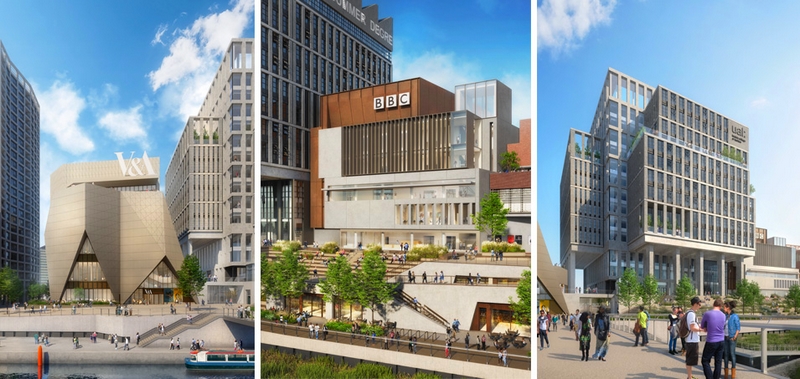The V&A plans to open up its vast stores of objects in a way which does not exist anywhere else in the world, creating dramatic 360-degree viewing spaces for the public to walk through.
It will also put on view large items which are normally kept in storage including Frank Lloyd Wright’s plywood-panelled 1930s office for Pittsburgh department store owner Edgar J.Kaufmann, and the 15th century marquetry ceiling from the now-destroyed Altamira Palace near Toledo, Spain.
The museum announced on Thursday new details of its plans for two V&A East sites opening in 2023 on the London Olympic Park in Stratford: a museum and a collection and research centre in a cavernous building which was used as studio space for broadcasters during the Olympics and is now called Here East.

The collection building is the result of the government’s decision to sell off Blythe House in west London, used as a store for 40 years by the V&A, the British Museum and the Science Museum.
The government gave the V&A £50m to come up with an alternative and the Here East scheme is the result.
Around 250,000 objects and 917 archives will be moved to east London. Tim Reeve, the V&A’s deputy director, said the gargantuan space would revolutionise how the public could access, explore and experience the collection.
It is a reinvention of what a museum store is. The New York-based architect Liz Diller, most famous for the High Line, has created designs based around the idea of the public entering the stores and the collection being “all around you, above you, below you, everywhere… and you have access to some of it”.

She described it as an immersive cabinet of curiosities. “There are other examples of archives where you can see a little bit, get a glimpse, but it has never been done this way before. The entire thing is built with the public in mind.”
There will be opportunities for pop-up displays, workshops and performances as well as spaces for more rarely seen objects – for example the 15 metre wide theatrical backcloth designed by Natalia Goncharova for the 1926 Ballets Russes London production of Stravinsky’s Firebird.
The stores could also display the V&A’s 1824 Panorama of Rome, designed with the viewer in the centre of a large cylinder; and the 1920s Frankfurt Kitchen, the forerunner of modern fitted kitchens.
A 10-minute walk from Here East will be the V&A’s new east London outpost, part of a cultural quarter which also includes a mid-sized Sadler’s Wells theatre, BBC recording and performance studios and UAL’s London College of Fashion. Collectively it will be known as East Bank, a replacement for Boris Johnson’s less easy on the tongue name – Olympicopolos.

The V&A said the new museum would include a partnership with America’s Smithsonian Institution, the world’s largest museum, research and education complex. The plan is that the two organisations will co-curate displays which explore topical themes. There will also temporary exhibitions with one in four curated by the Smithsonian.
David Skorton, secretary of the Smithsonian, said the plan was to develop new ways of presenting its collections to a “hungry” public and collaboration was key. “We are reminded every day by the headlines, the world faces such daunting, complex challenges. But we also know it is unlikely that we are going to solve our problems through independent action.”
The five-storey building, opposite West Ham’s London stadium, has been designed by architects Sheila O’Donnell and John Tuomey.
They said it was an opportunity to open up the V&A’s collection to all. “As a vital sourcebook for infinite creative possibilities, as a place where young people can develop their creative skills and critical thinking, and as a platform to interrogate the ideas of our time through the designed world past and present.”
guardian.co.uk © Guardian News & Media Limited 2010
Published via the Guardian News Feed plugin for WordPress.


